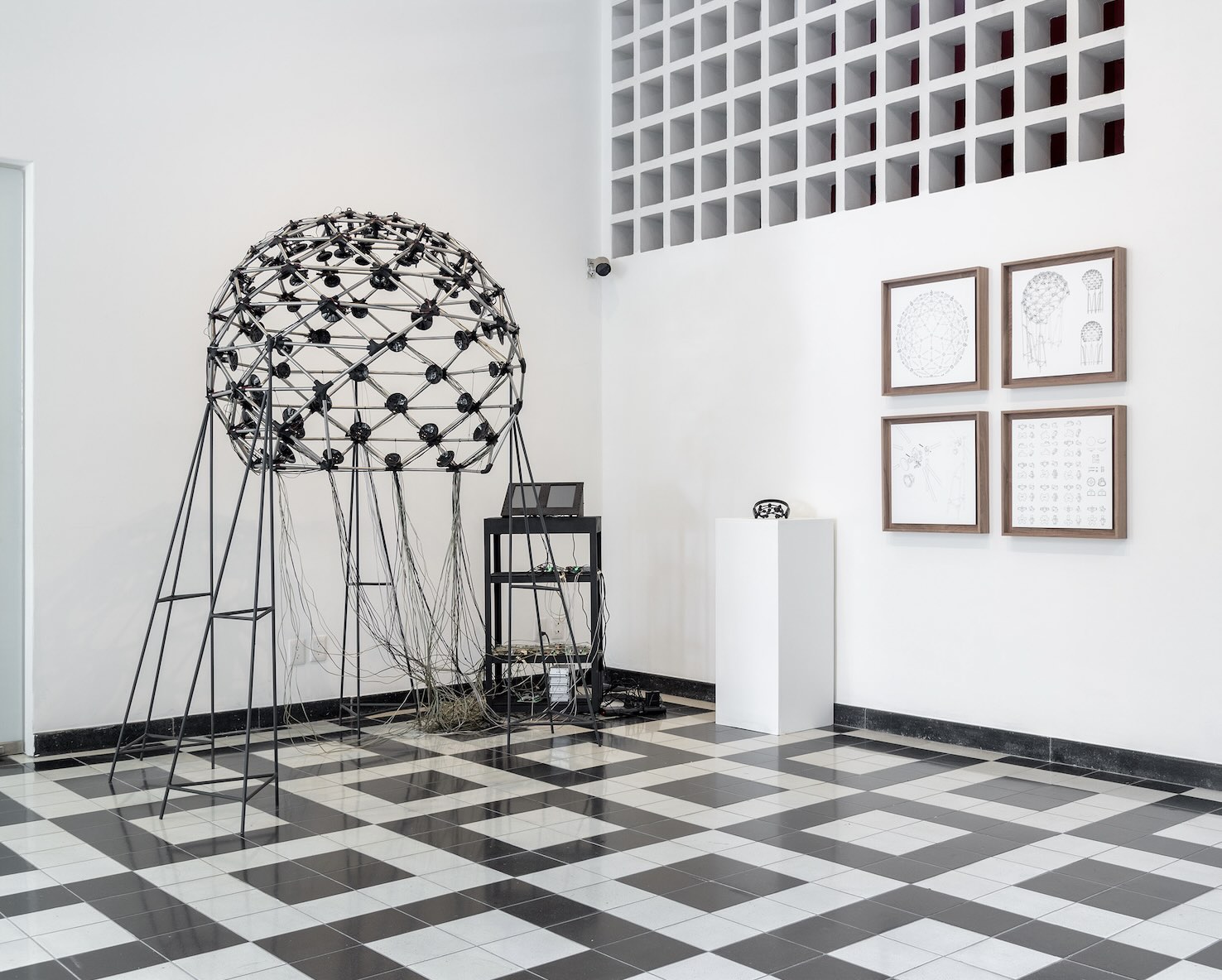
Review
Epistemologies of the Desert and Ontological Machines in Hipofrontalidad transitoria by Interspecifics
by Maya Renée Escárcega
Reading time
5 min
Various tools help us identify, understand, and bring into the realm of signs the chemical and electrical processes in the brain that shape our internal state. Entering the gallery at PALMA, formerly known as Proyecto Arte, reminds me of two devices stored in the archive of my childhood memories. The first, rudimentary in its technological apparatus and graphic in essence, is the wheel of emotions. The second is a device that artificially induces mystical or religious experiences by stimulating specific areas of the brain. This instrument (from the eighties) was called the “God Helmet.”
Caught between scientific and metaphysical jargon, Hipofrontalidad transitoria [Transitory Hypofrontality] is a project that prompts recollection. Accessing memory, as various academic disciplines have taught us, is an act of fabulation. It is a narrative exercise in which lived experiences are poetically recontextualized. From an artistic practice based on research and precise technical mastery, the collective Interspecifics—comprised of Emmanuel Anguiano, Leslie García, Paloma López, Alfredo Lozano, and Felipe Rebolledo—presents a series of living machines designed to replicate a state of deep consciousness known as transitory hypofrontality. This state can be temporarily induced by meditation, exercise, and substance use.
The exhibition begins with Wave Reflector (2024), a semi-modular dome that recalls both the God Helmet and an electroencephalograph—a machine composed of 20 metal disks placed on the scalp, connected to an instrument that amplifies and records brain waves onto a computer. While modern science “breaks the fourth wall” of the electroencephalogram (EEG)—a passive monitoring technique—by using it for neurofeedback (a training that modifies waves associated with relaxation), Interspecifics reconciles the idea that this wall never existed. The relationship between humans and machines is bidirectional and mutually influential.
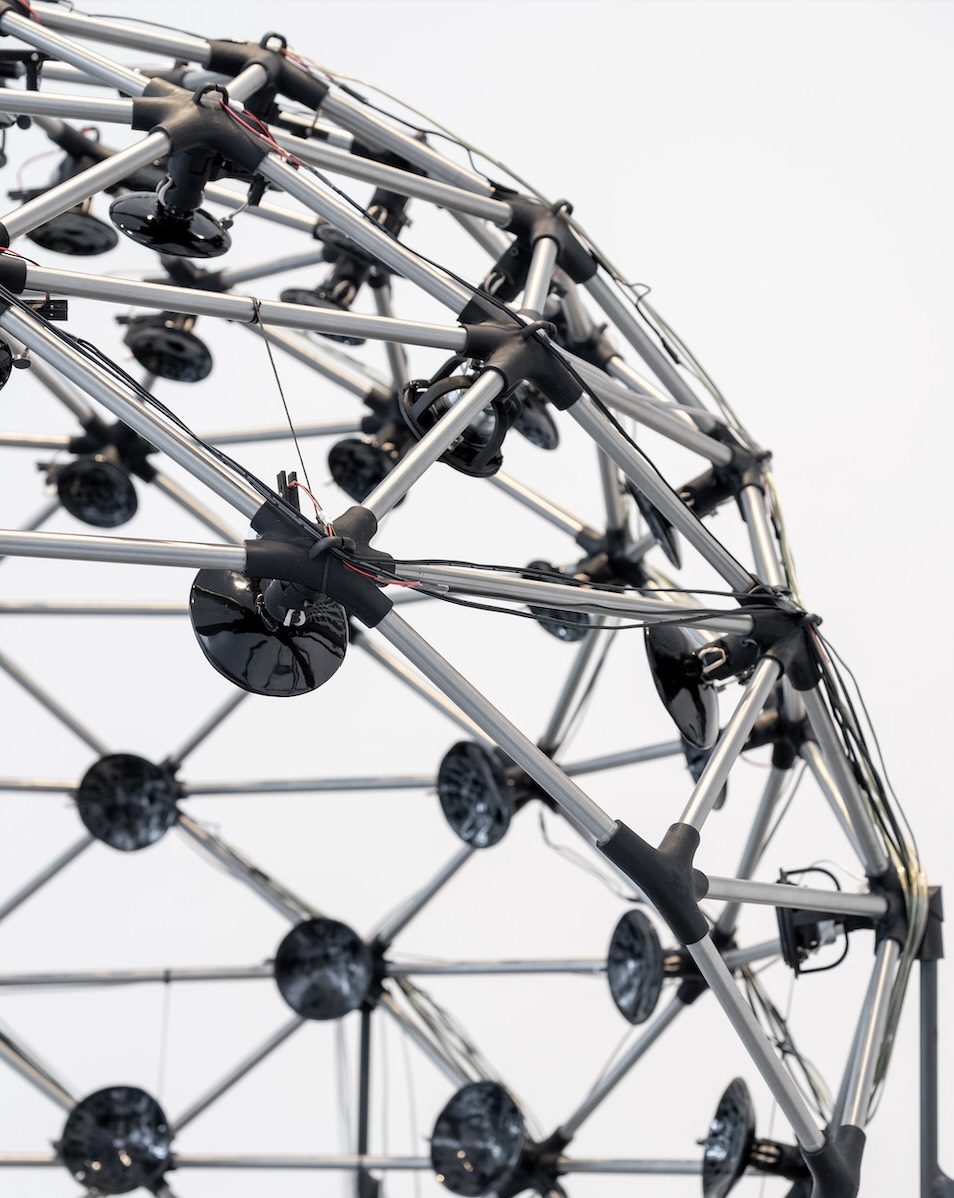
Once under the dome with an electrode headband, the machine, produced during an artist residency at the Tec de Monterrey, collects brain activity and translates it into a sound composition that mimics the patterns of neural waves. Through 64 ceramic oscillators arranged in the steel structure, vibrations are amplified and synchronized with the electrical oscillations of neurons, creating soundscapes that allow one to hear their own mind in real-time. As a sound installation, Wave Reflector (2024) reproduces compositions partially based on the data collected. As a performative piece, it allows spectators to become patients in all senses of the word: by calming themselves, by becoming receivers of an agent—self-organizing living machines—and by being recognized by a health system.
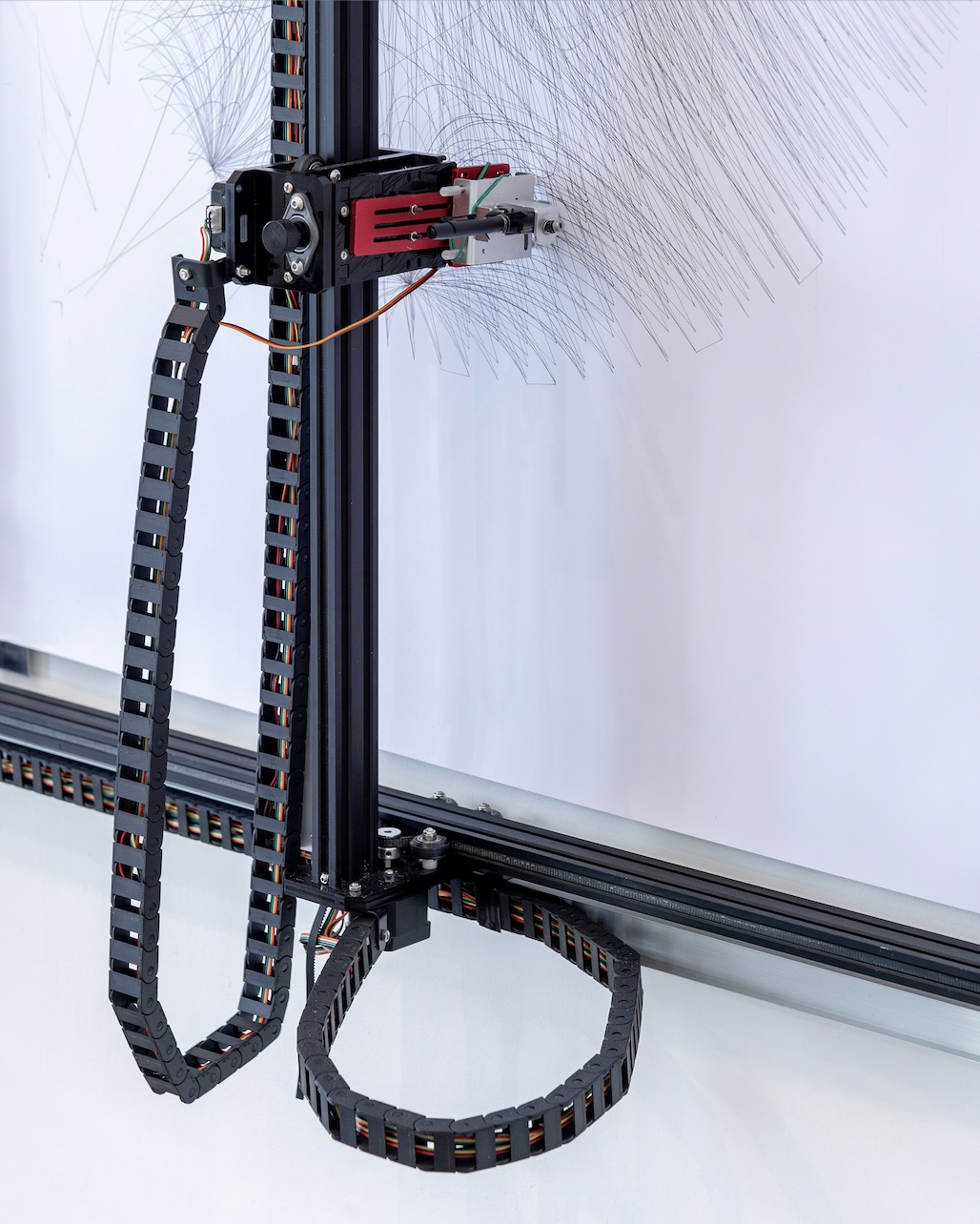
In the adjacent room, a plotter traces curved lines with carbon ink on cotton paper. Based on information collected from 48 participants, the machine draws a portrait of each individual’s deep self, preserving in the intimate language of neuroscience the emotions experienced while channeling a memory during a meditation session with an EEG headband. A pair of Deep Self-Portrait (2022–2024) pieces are displayed in negative, accompanying the drawing-machine in its performative act.
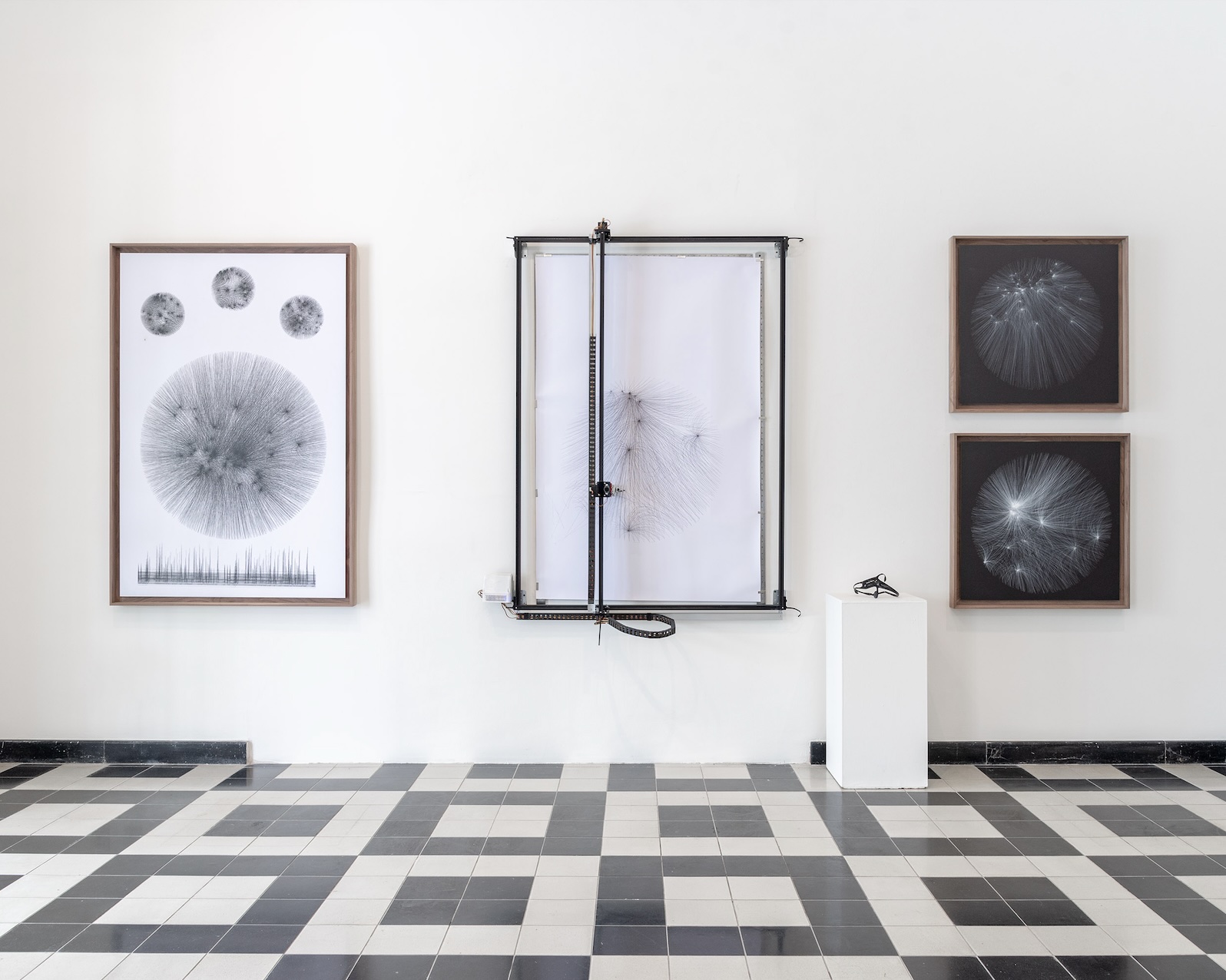
Opposite, a pair of sculptural drums serve as proxies for two human hearts. Handcrafted and powered by solenoid motors, they reproduce pre-recorded cardiac data, while screens project visualizations of the heartbeats. Metasincronía (2024) continues the inquiry begun in Entertainment (2024), presented at Privada Pública. This performative piece, composed live and collaboratively in three acts, explores cardiac coherence through sonic biofeedback. The participants—including artists Miriam Rodríguez, Lino Vite, and his infant daughter Leonora—spontaneously synchronized their heartbeats during a performative cycle through active listening in real-time.
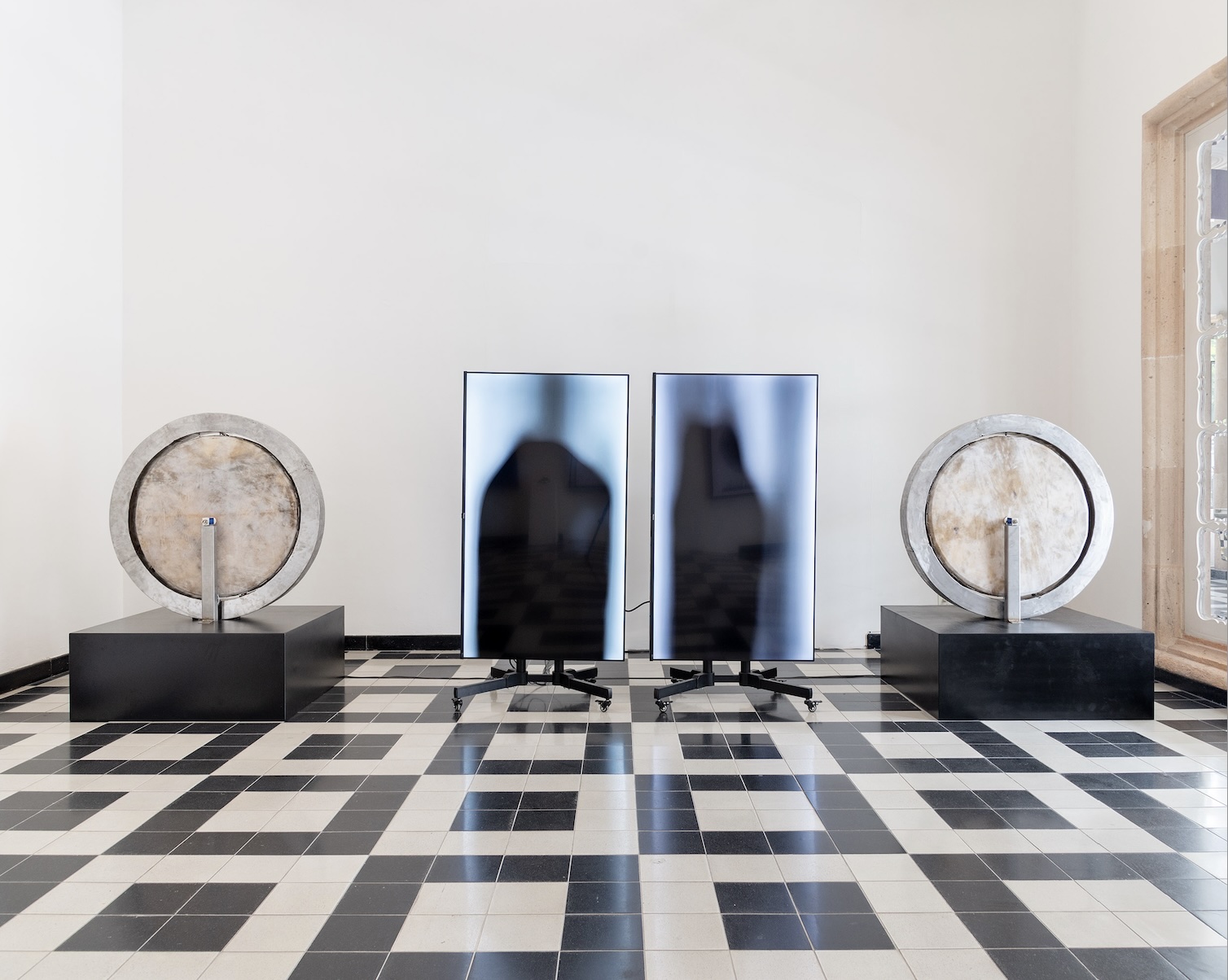
The final work in the exhibition is devoid of a machine. Unlike the previous pieces, Desierto Metafísico (2024) is not accompanied by an explicit technological artifice. Rather, its cycle of investigation consists of documents that are both egg and chicken in a continuous interconnection. Wave Reflector is presented alongside four documents: a sort of blueprint of the structural design of a dome, its components, and assembly. In Deep Self-Portrait, the portraits evoke EEG results, with the function of generating a graphic or curve traced on paper or a screen.
The encounter with Desierto Metafísico takes place in front of four lithographs that could have been taken from a travel book or a nineteenth-century artists-scientists-voyagers album. The images capture the geographical conditions of the vast desert areas of northern Mexico, with clear skies and vegetation ranging from scrub to shrubs and cacti. Under the hostility of the night, the desert prints depict one of the most hospitable places for extraterrestrial life, according to the thought (belief? knowledge?) of that region of the country. Luminous spheres gather in a circle, floating behind the hill and at its base.

No less fictitious than nineteenth-century prints (though colonialist in their fabulation), the images were generated from memories that never happened, or that have yet to be proven to happen, materialized through photolithography—an analog technology.
Extraterrestrial life in the desert and machines composing landscapes and drawing portraits of the internal life of the brain exemplify the interconnection and coexistence between species and life forms proposed in the field of speculative fabulation. What Donna Haraway conceives as SF (speculative fabulation, speculative feminism, science fiction, speculative fiction, scientific facts, scientific fantasy, and string figures) acts as a vehicle for exploring ontologies and epistemologies that arise from the fusion of the biological and the technological, producing knowledge and worlds with organic and inorganic creatures and stories in their dense material and narrative fabrics.
Learning about the God Helmet in childhood prevented me from interpreting the column of cloud emerging from the sky during desert journeys as a divine manifestation. Then, the conclusion was that mystical experiences are not encounters with the other, but with oneself. Now, in Hipofrontalidad transitoria, thanks to the (techno-shamanic, in Alfredo Lozano’s words) ritual where machine-influenced meditation induces an altered state of consciousness, where the division between the individual and the whole blurs and the "self" synchronizes with the "all," it can be thought that the contact is indeed with the other—with the desert aliens.
Translated to English by Luis Sokol
Published on October 4 2024